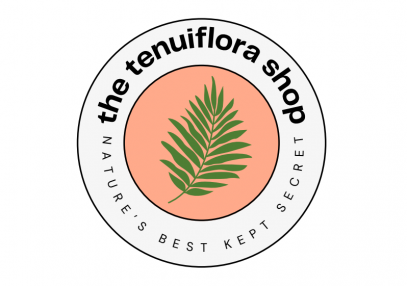Mimosa Tenuiflora vs. Mimosa Hostilis: What’s the Difference?
If you’ve researched natural botanicals, you’ve likely come across the names Mimosa tenuiflora and Mimosa hostilis. But are they two different species, or just different names for the same plant?
The short answer: They are the same plant. However, the distinction in names has led to confusion among researchers, suppliers, and consumers alike. In this article, we’ll break down the differences (or lack thereof), explain their historical usage, and clarify why this botanical is highly sought after.
Mimosa Tenuiflora vs. Mimosa Hostilis: Understanding the Naming Confusion
When researching Mimosa Tenuiflora vs. Mimosa Hostilis, many buyers wonder if they are purchasing the correct botanical. Since both names refer to the same plant species, suppliers and researchers often use them interchangeably. However, understanding the history behind Mimosa Tenuiflora vs. Mimosa Hostilis helps ensure that consumers recognize what they’re getting. Whether labeled as Mimosa Hostilis root bark powder or Mimosa Tenuiflora bark, the product remains identical in terms of quality and botanical properties. The important factor is sourcing from ethical and reputable suppliers to ensure purity and sustainability. If you’re searching for Mimosa Tenuiflora vs. Mimosa Hostilis products, always verify that the supplier provides authentic, lab-tested materials with transparent harvesting practices.
The Botanical Classification
Mimosa tenuiflora and Mimosa hostilis refer to the same species of tree found in Central and South America. The confusion arises from historical naming conventions:
- Mimosa hostilis was the original name given to the plant when it was first classified in 1919.
- Mimosa tenuiflora became the scientifically accepted name in later years, replacing Mimosa hostilis in botanical literature.
Despite this reclassification, many people—especially those in ethnobotany, herbal medicine, and natural skincare—continue to use both names interchangeably.

Where is Mimosa Tenuiflora Found?
This tree is native to Brazil, Mexico, and other parts of Central and South America. It thrives in dry tropical regions and has been used for centuries by indigenous groups for its healing and restorative properties. The bark, leaves, and roots have been utilized in a variety of traditional applications.
Traditional and Modern Uses of Mimosa Tenuiflora
1. Skincare and Healing Properties
One of the most well-known uses of Mimosa tenuiflora is for skin health. The bark contains tannins, flavonoids, and antioxidants that make it a powerful ingredient for:
- Soothing and regenerating the skin
- Promoting wound healing
- Reducing irritation and inflammation
Due to these benefits, it has been incorporated into skincare products, balms, and natural healing formulations. In some regions, it has been used to treat burns and scars, earning it the nickname “skin tree”.
2. Natural Dyeing
The inner root bark of Mimosa tenuiflora is also popular for natural dyeing. Its deep reddish-brown hue is widely used in textile dyeing, leather tanning, and eco-friendly art projects. It provides long-lasting color and is considered an environmentally friendly alternative to synthetic dyes.
3. Botanical Research and Sustainability
This tree has gained attention for its complex chemical profile, making it a key subject of scientific and botanical studies. Researchers are particularly interested in its natural compounds, including tannins and alkaloids, which contribute to its skincare and medicinal benefits.
Sustainability has also become a major focus, as the increased demand for Mimosa tenuiflora bark powder has led to concerns about overharvesting. Ethical sourcing and sustainable harvesting practices are now essential to ensure preservation and responsible use.
For further details on the plant’s chemistry and sustainability, check out this research article on botanical extracts.
Choosing High-Quality Mimosa Tenuiflora Bark Powder
When purchasing Mimosa tenuiflora bark powder, look for: ✔ Ethically sourced, sustainably harvested materials ✔ Fresh, finely ground powder with a rich reddish-brown color ✔ Verified purity and third-party lab testing ✔ Minimal processing to preserve natural botanical compounds ✔ A reputable supplier with transparency in sourcing
For high-quality Mimosa tenuiflora bark powder, visit TenuifloraShop.com.
How to Store Mimosa Tenuiflora Bark Powder
To maintain freshness and potency, it’s important to store Mimosa tenuiflora bark powder properly:
- Keep it in an airtight container to prevent moisture exposure.
- Store in a cool, dark place away from direct sunlight.
- Use glass or Mylar bags for long-term preservation.
Proper storage ensures that the bark retains its rich color and beneficial properties for extended use.
Final Thoughts
The debate between Mimosa tenuiflora vs. Mimosa hostilis is more about terminology than actual differences. Whether you see one name or the other, you’re looking at the same incredible botanical with a wide range of uses. Understanding this distinction can help buyers make more informed decisions and ensure they are purchasing authentic, high-quality material.
Mimosa tenuiflora continues to be a valuable resource for skincare, botanical research, and traditional uses, and choosing ethically sourced products is key to maintaining both its benefits and sustainability.
